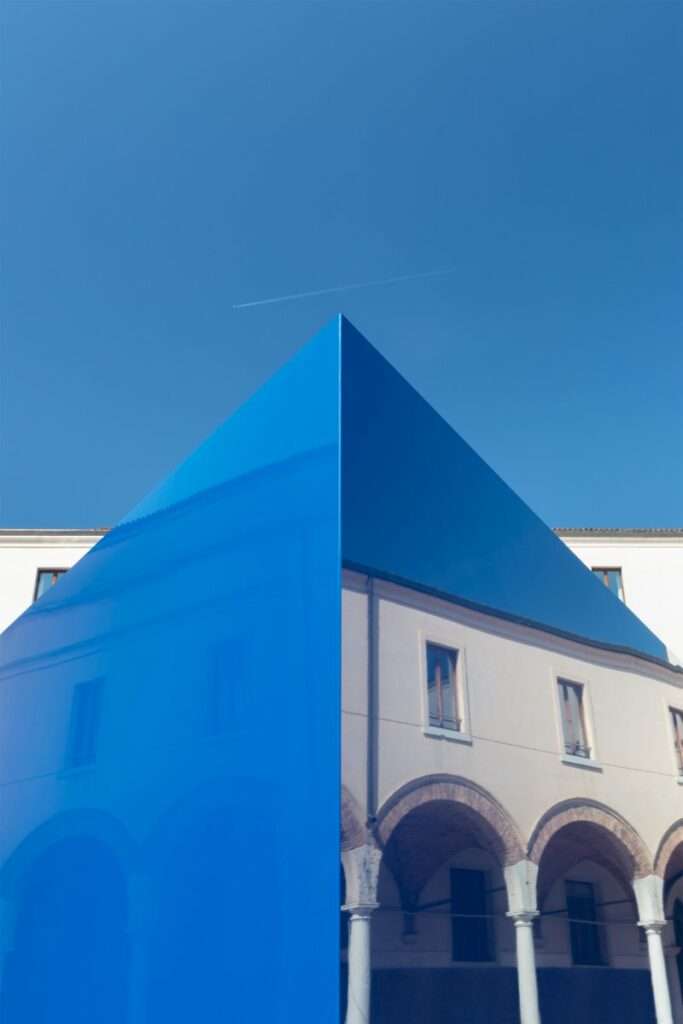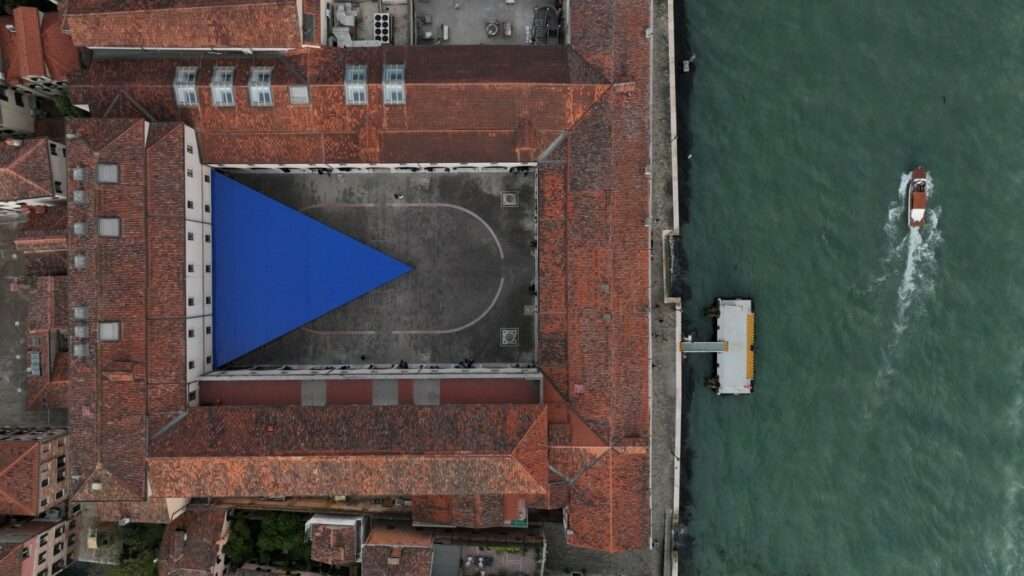Opened on April 20, the swell of spæc(i)es exhibition by artist Josèfa Ntjam has become the first-ever exhibition to be hosted at the Accademia di Belle Arti – Venice’s Art School – within the Venice Biennale circuit. To mark this historical occasion a special temporary pavilion has been commissioned by LAS Art Foundation and designed by UNA / UNLESS, an interdisciplinary studio founded by architect Giulia Foscari.


The 350 sqm blue pavilion with a reflective surface in the shape of a triangular, echoes the theme of the exhibition with its “abstract presence”, making it look like an alien object amongst the historical building of the former hospital Ospedale degli Incurabili. Located in the courtyard, a temporary pavilion designed for a Collateral Event of the 60th International Art Exhibition of La Biennale di Venezia creates an optical illusion of the fourth side of the loggia, connecting it to the ancient building.


The symmetry of the pavilion allows for it to be open toward the loggias of what is today the Venetian Accademia di Belle Arti, where art students and professors discuss their ideas and research valuable topics. However, as the building has been repurposed many times, this courtyard has witnessed many changes in the last centuries. These include the appearance and disappearance of a wooden chapel, built in 1523, and a church by Jacopo Sansovino, constructed in 1565 and demolished in 1831 after the Ospedale degli Incurabili was repurposed to serve as a civic hospital and military barracks. Nowadays, the courtyard takes on the role of a space dedicated to artistic experimentation solely.


Open for visitors until November 24, this exhibition allows not only to experience the surreal atmosphere of swell of spæc(i)es, but also to explore the pavilion from the inside. As visitors enter the pavilion, they encounter a large convex surface that traces the original footprint of Sansovino’s church, evoking its absence while hiding a large LED screen that immerses them in the surreal atmosphere of the exhibition. Previously filled with the music of the church choir, the space will once again resonate with a rich soundscape composed by Fatima al Qadiri, accompanied by voices emerging from sonic sculptures.









